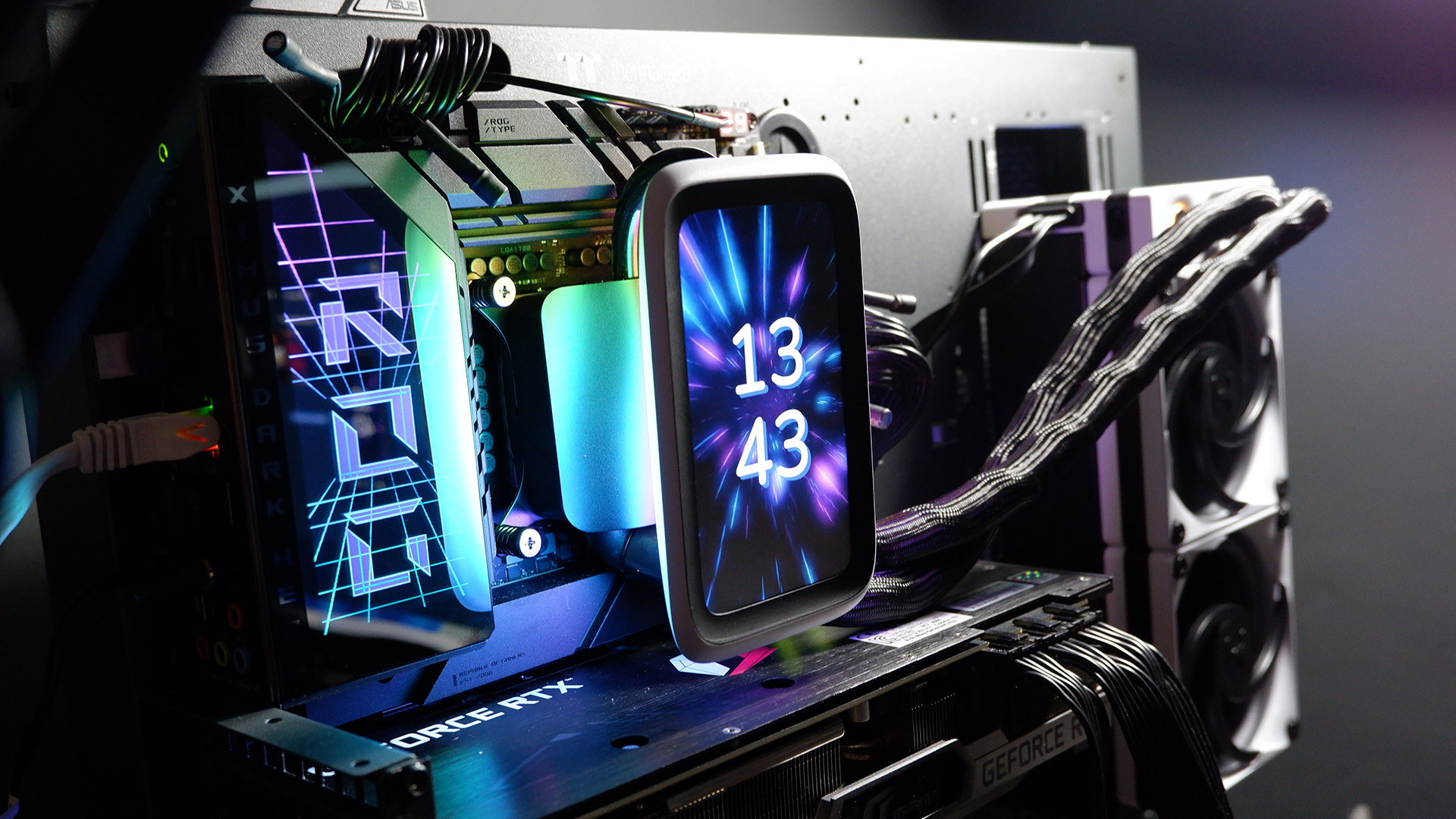
Take a look at the Hyte Thicc Q60 and you might come to the conclusion that this is an all-in-one liquid cooler that pushes appearance over performance. That's not strictly true, however. Yes, the Q60 is adorned with a 5-inch screen, a litany of RGB LEDs, and some tidy cabling—but there's also a chunky CPU cooler beneath it all.
The Q60 is a big beast. It's an all-in-one liquid cooler with a radiator double as thick as some, coming in at 52 mm. That's reportedly to utilise space not often utilised to its fullest in modern PC cases, according to Hyte—it's opting for a thicker radiator in the place of a longer one.
The Q60 is billed as a 240 mm radiator, on account of the two 120 mm Thicc FP12 fans included, but it's actually 288 mm from top to bottom. The remaining space is taken up by the pump, which takes residence on the radiator rather than in the more traditional spot behind the cold plate. The benefit of this being, for the Q60 at least, more room for the enormous screen above the CPU.
The 5-inch screen on the Q60 is best described as a tiny computer. It includes a quad-core Arm Cortex CPU, with 2 GB of DDR4 running at 2,666 MT/s, and running at 1.3 GHz. It also has 32 GB of eMMC storage. All to run the many widgets, which Hyte has named 'faces', available via the Hexus application, which is pretty much a must-install with this cooler.
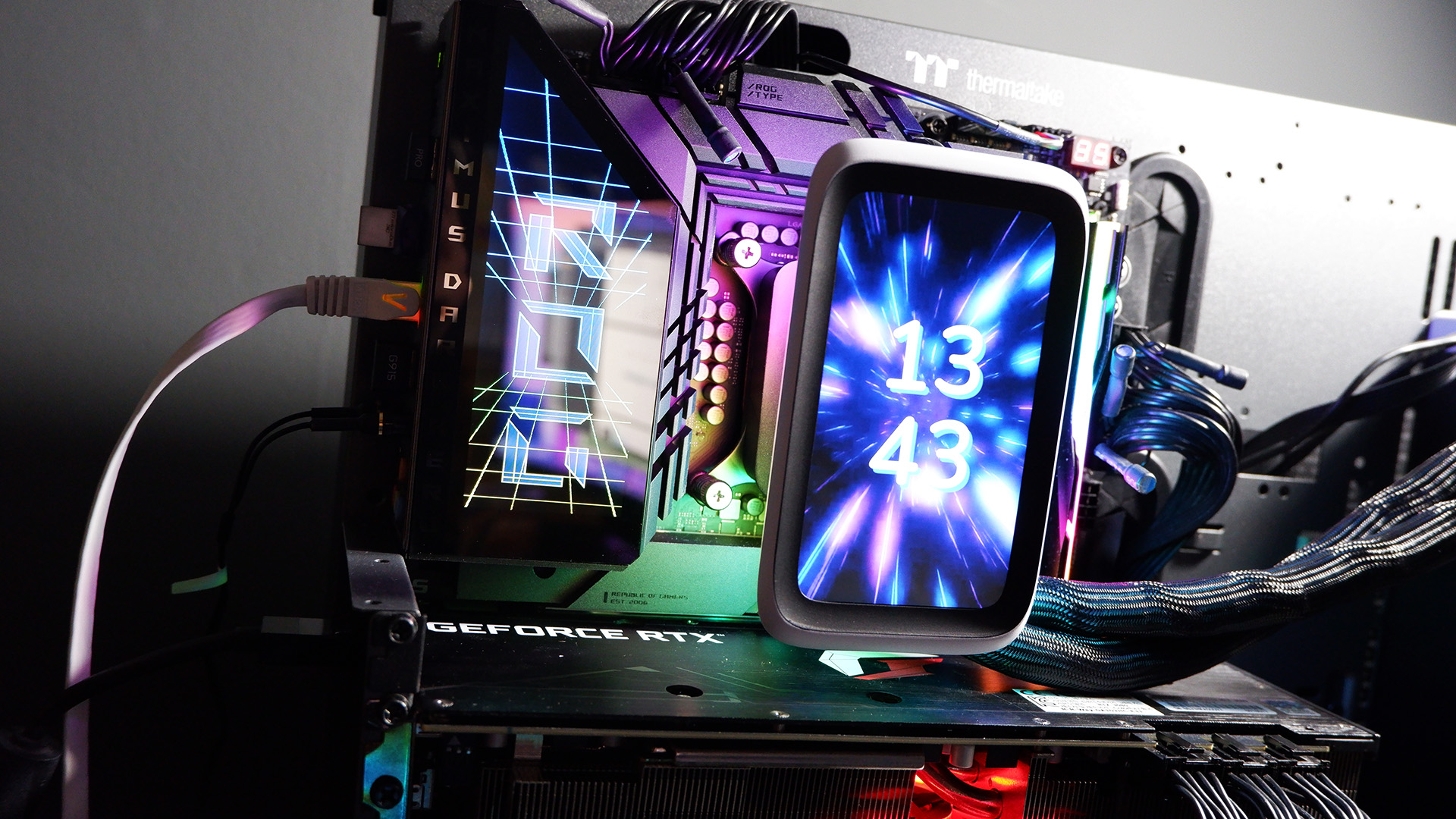
Compatibility: LGA 1700, 1200, 115X, 2011*, 2066* - AMD Socket AM5, AM4, TR4* (* available from Hyte support)
Dimensions: 120 x 288 x 52 mm (cold plate: 56 x 56 x 1.5 mm)
Radiator: 288 mm, aluminium
Pump: Ceramic, up to 4,500 RPM
Fans: 2x Thicc FP12 120 mm, Fluid Dynamic Bearing, up to 3,000 RPM
Lighting: Full RGB on radiator logo, array behind screen
Screen: 5-inch IPS, 60 Hz, 300 nits, 720 x 1280 resolution
Storage: 32 GB eMMC
Memory: 2 GB DDR4
Price: $300 | £330
"You can watch the entirety of Shrek on the Q60 if you want to," a Hyte representative tells me.
I've opted for a parade of system monitoring 'faces': liquid in temp, liquid out temp, CPU temp, and GPU temp. Oh, and the clock, which I cannot seem to remove. There are a lot of options to choose from and a few more 'coming soon'—clock speeds, fan speeds, and throughput are all reportedly on their way to the app. You can also set the screen to display your current media playing via Spotify. And play your own media. And you're free to change the background. It can do a lot of stuff, actually.
The screen is only capable of showing four custom faces, however, which feels pretty limited. I'd like a bunch more. Though I'm told you could also break out some Android commands and run anything you like on this thing, even ditching the entire Hyte Hexus application altogether.
"If you're a software developer and have the know-how and tools and abilities, we kept the door open."
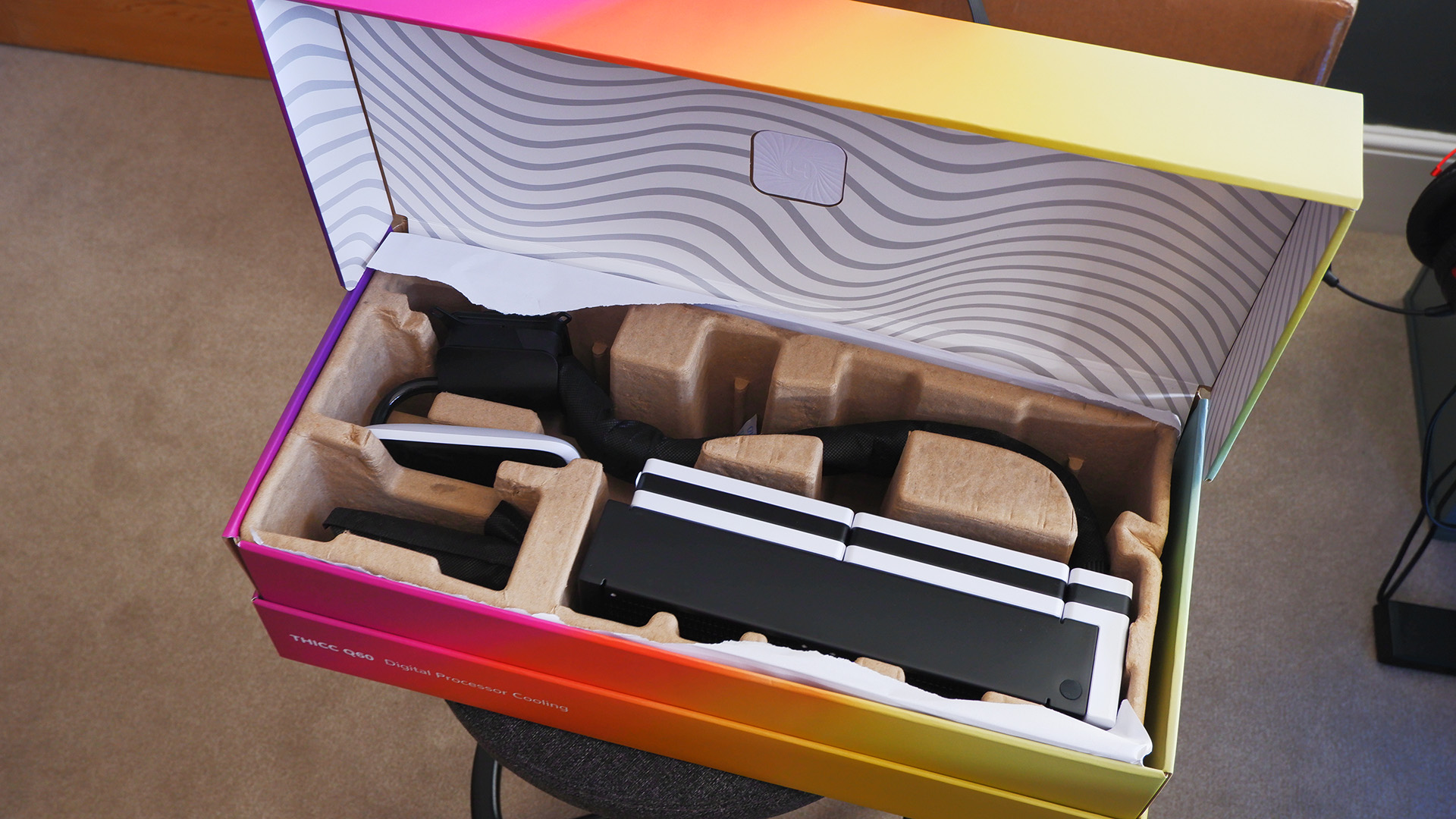
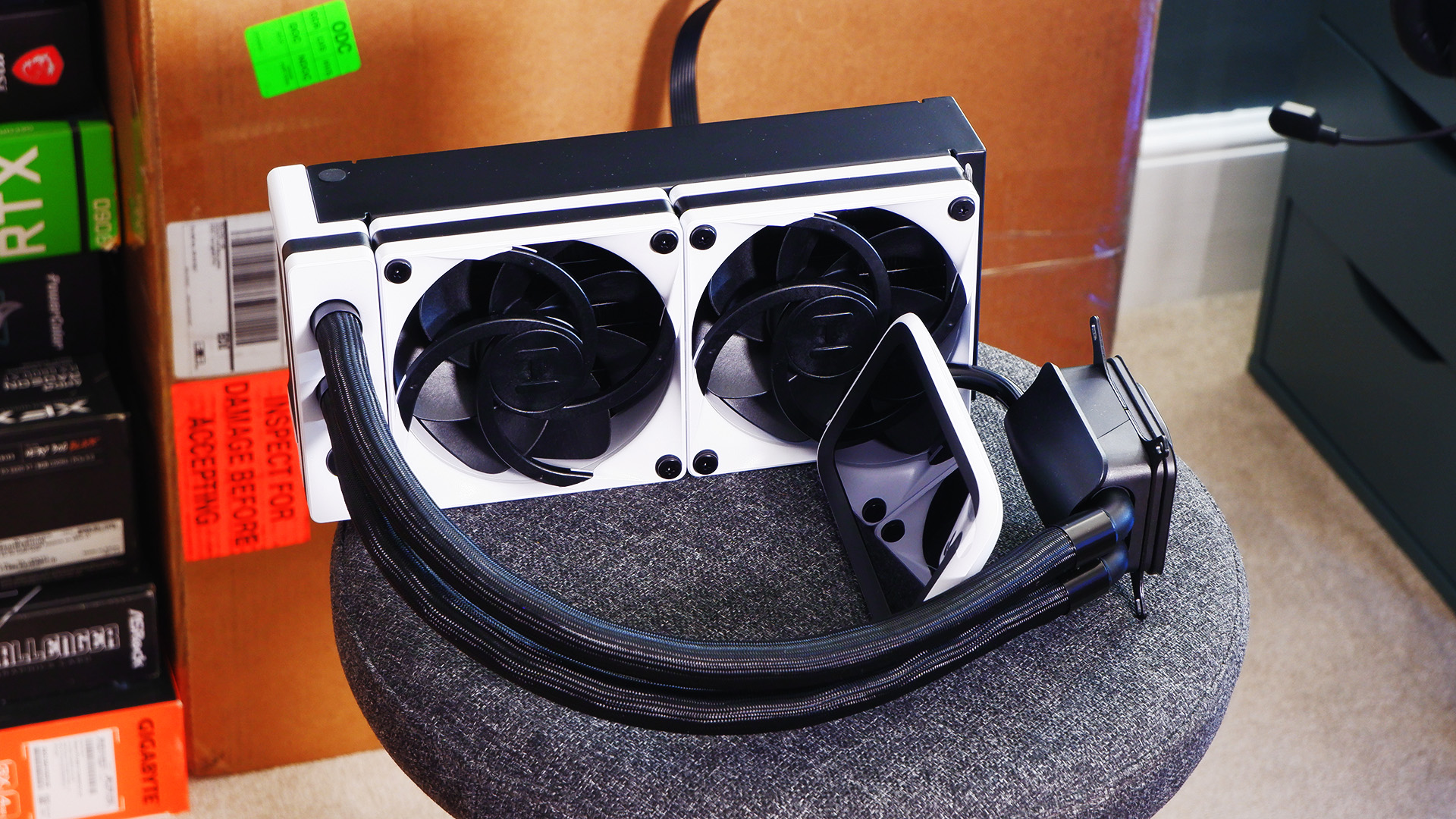
I'm not usually a fan of sticking a screen on peripherals and parts for no discernable reason except 'we could'. But I'm sorta into the Q60's central screen. It's impressive and not at all as domineering as I had originally expected. The subtle two-tone design of the rest of the cooler helps—if the fans were also adorned with RGB lighting, it'd probably feel a bit too much. As it stands, the screen is pretty wicked.
Yet as I mentioned at the beginning, the Q60 isn't only about appearances. It is a capable liquid cooler in its own right.
In balanced mode, with the PC idling, the Q60 is nominally audible. During gaming it's only a little noisier—I've been running the Metro Exodus benchmark many times over and the only noise coming from the Q60 throughout is a steady, polite hum. It doesn't noticeably fluctuate between speeds, either, which makes the noise it does produce much less distracting.
Only during more CPU intensive workloads did I begin to take note of the sound coming from the fans and pump unit. Moreover, for adequate cooling performance, I found I needed to crank up the cooler to performance mode. This increases the fan RPM considerably, even when idling, which makes for a notably louder buzz.
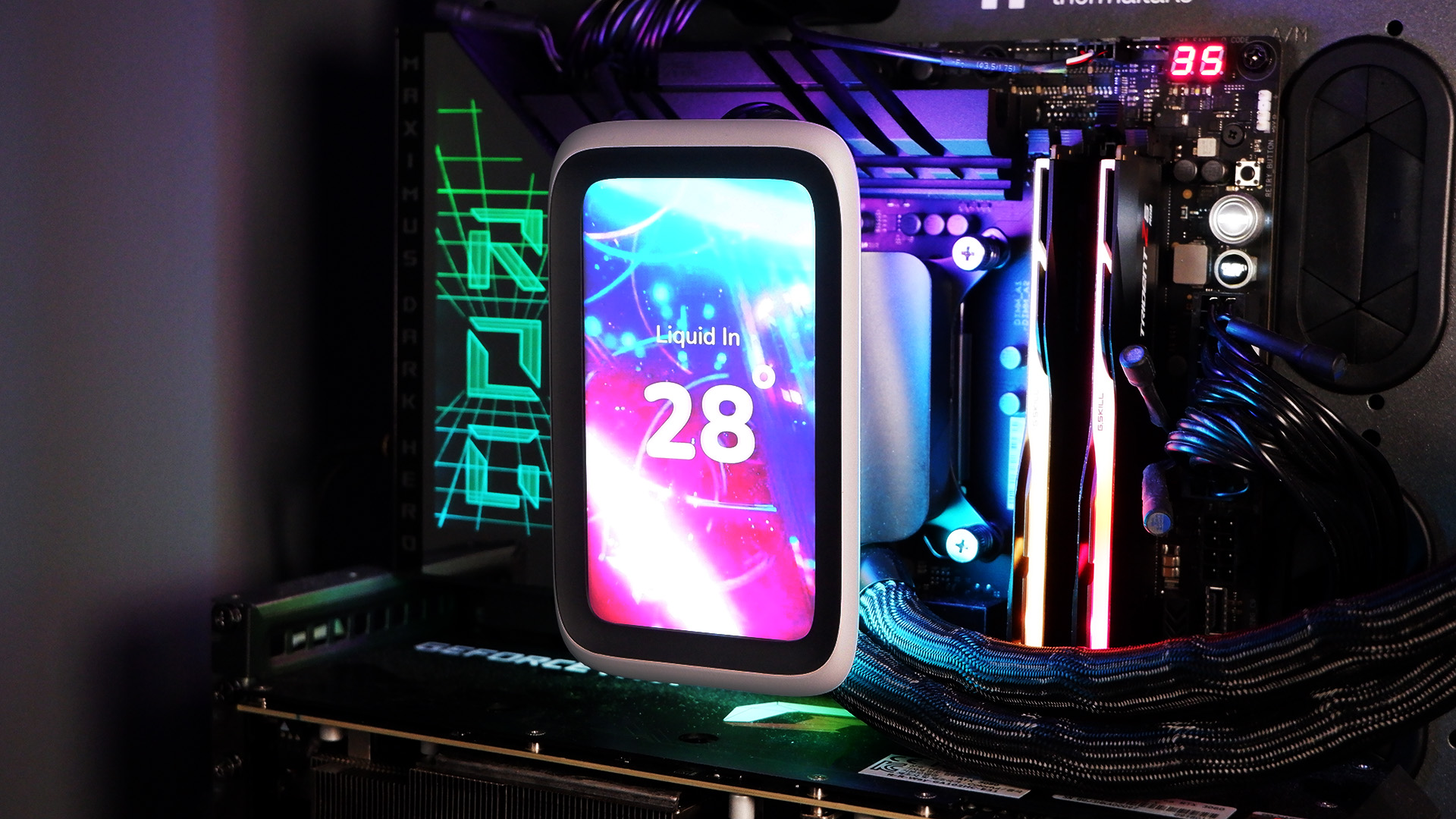
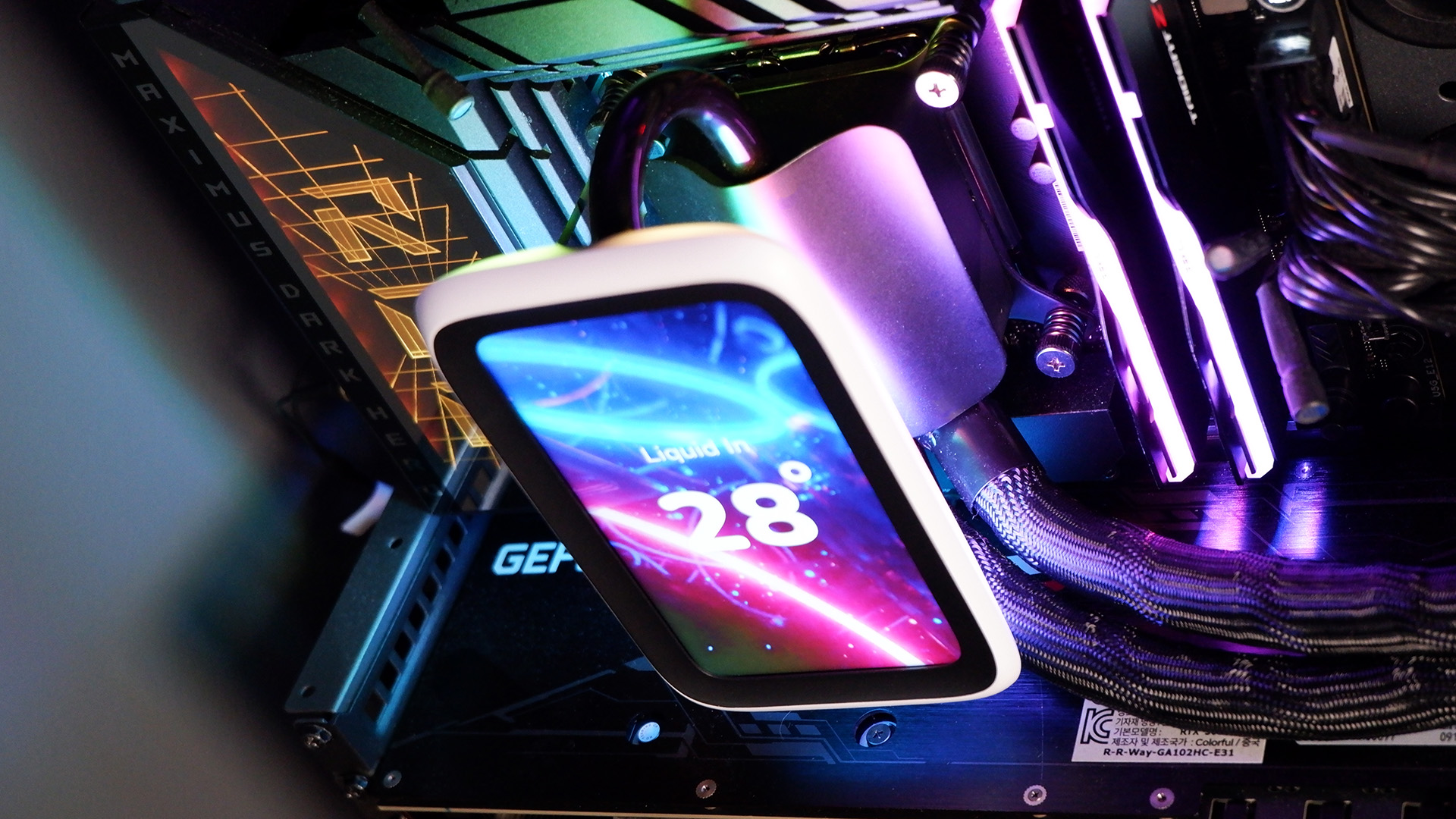
Though, in return, this cooler delivered the lowest temperatures while gaming out of those I tested, which included a 360 mm AIO.
The Q60 isn't quite as capable as others when it's really pushed to the limit, however. The Q60 didn't fair as well in Cinebench R23. There was no thermal throttling, but the Q60 was the only cooler to hit 90°C.
It couldn't quite cope with the bouncy demand of the X264 benchmark, either, which seemed to get the better of the Q60 more than any other. That might be because the Q60 also appeared the slowest cooler to reset back to idle temperature. At a certain threshold, around 35°C, the fans switch off completely, which means the CPU tends to stay hotter than with other coolers that don't do this.
It's possible to reduce idle temperatures into the twenties by setting the Q60 to be controlled by a firmware-set curve. There are a few control options to choose from in the Hexus application: Hexus, firmware, or motherboard. Firmware is made up of two simple curves: one for fans, the other for the pump. With this set I saw the idle temperature drop to 27°C, as the fans were never fully off.
The fans will go up to a whopping 3,000 RPM, and they do not get anywhere close with Hyte's preset fan curves. That said, I've tried running at full RPM and it's not worth the extra noise generated—I recorded only marginal reduction in CPU package temperature through Cinebench R23.
A bit of a mixed bag then. If you want pure cooling performance for the money, look elsewhere. Though if you want to strike a balance between performance and noise levels, and mostly plan on gaming, the Q60 is a stronger pick.
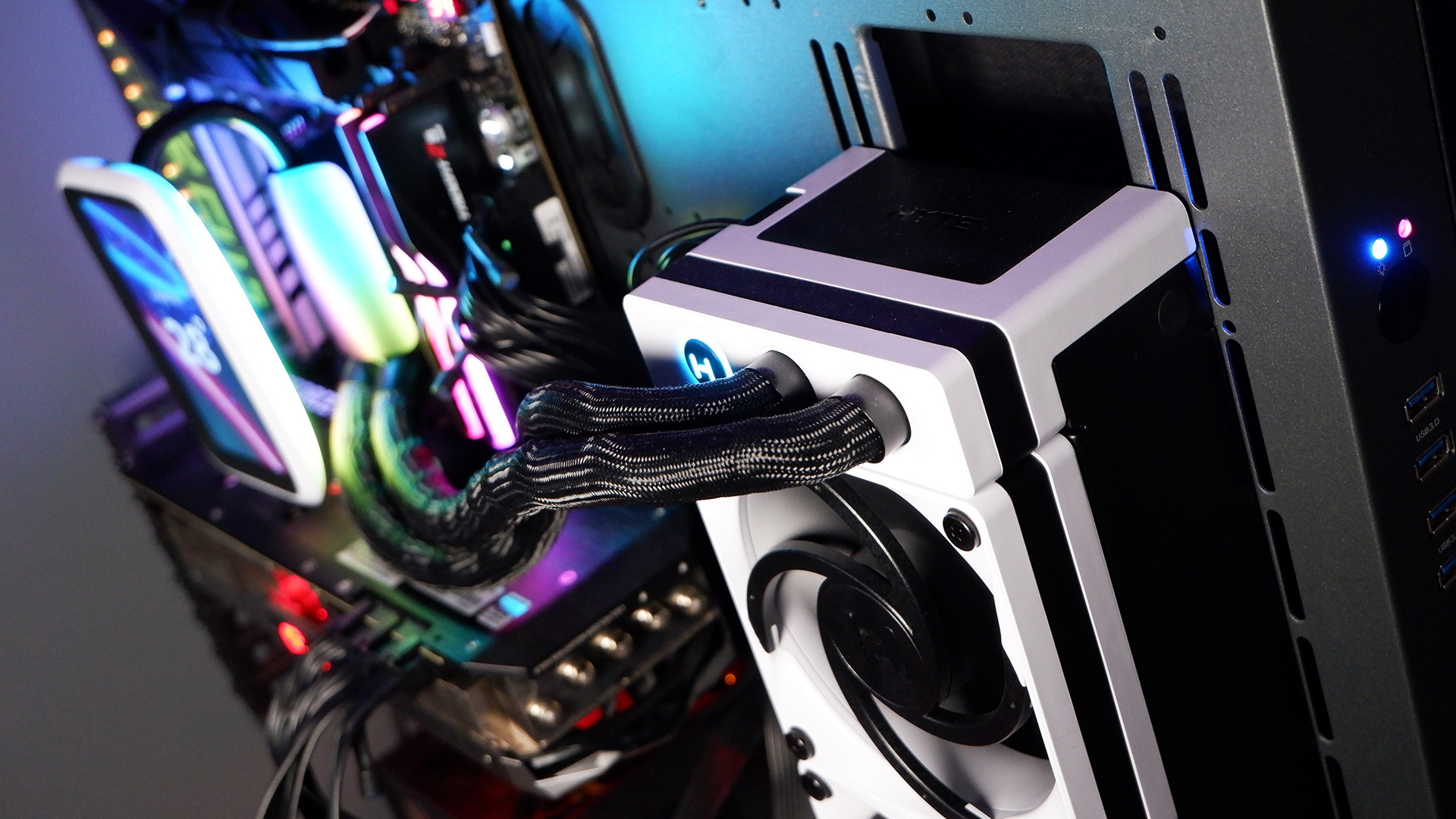
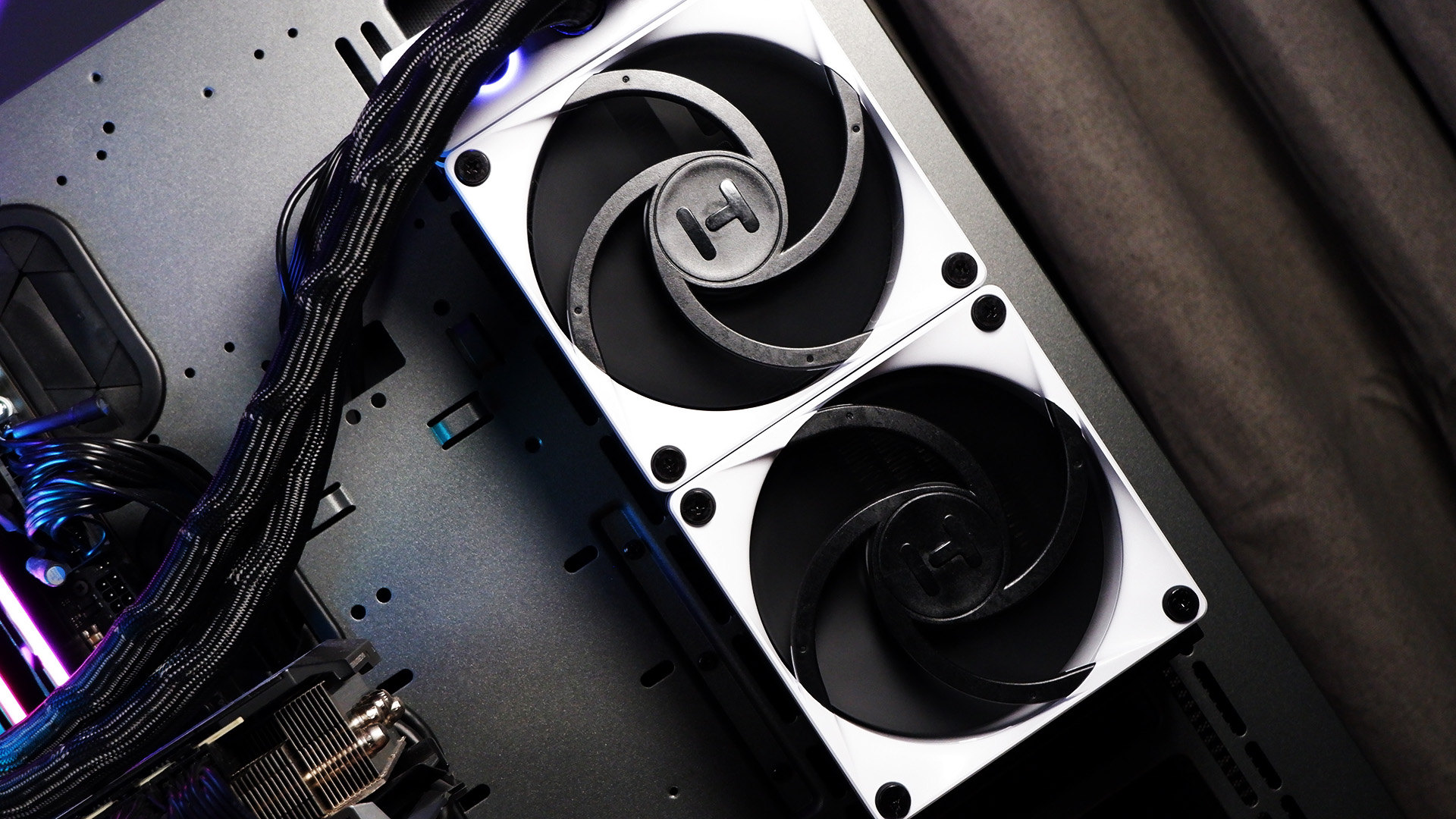
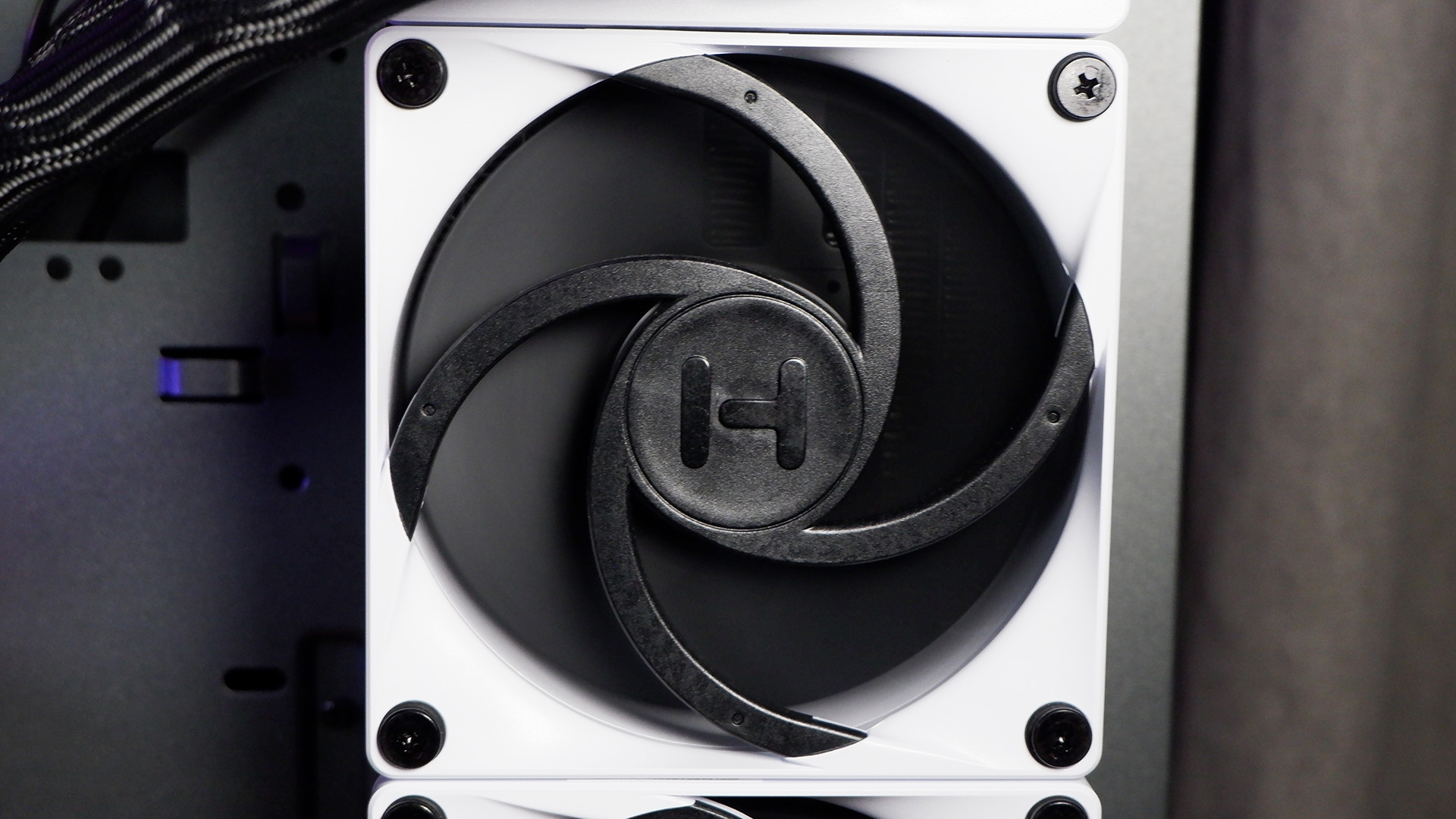
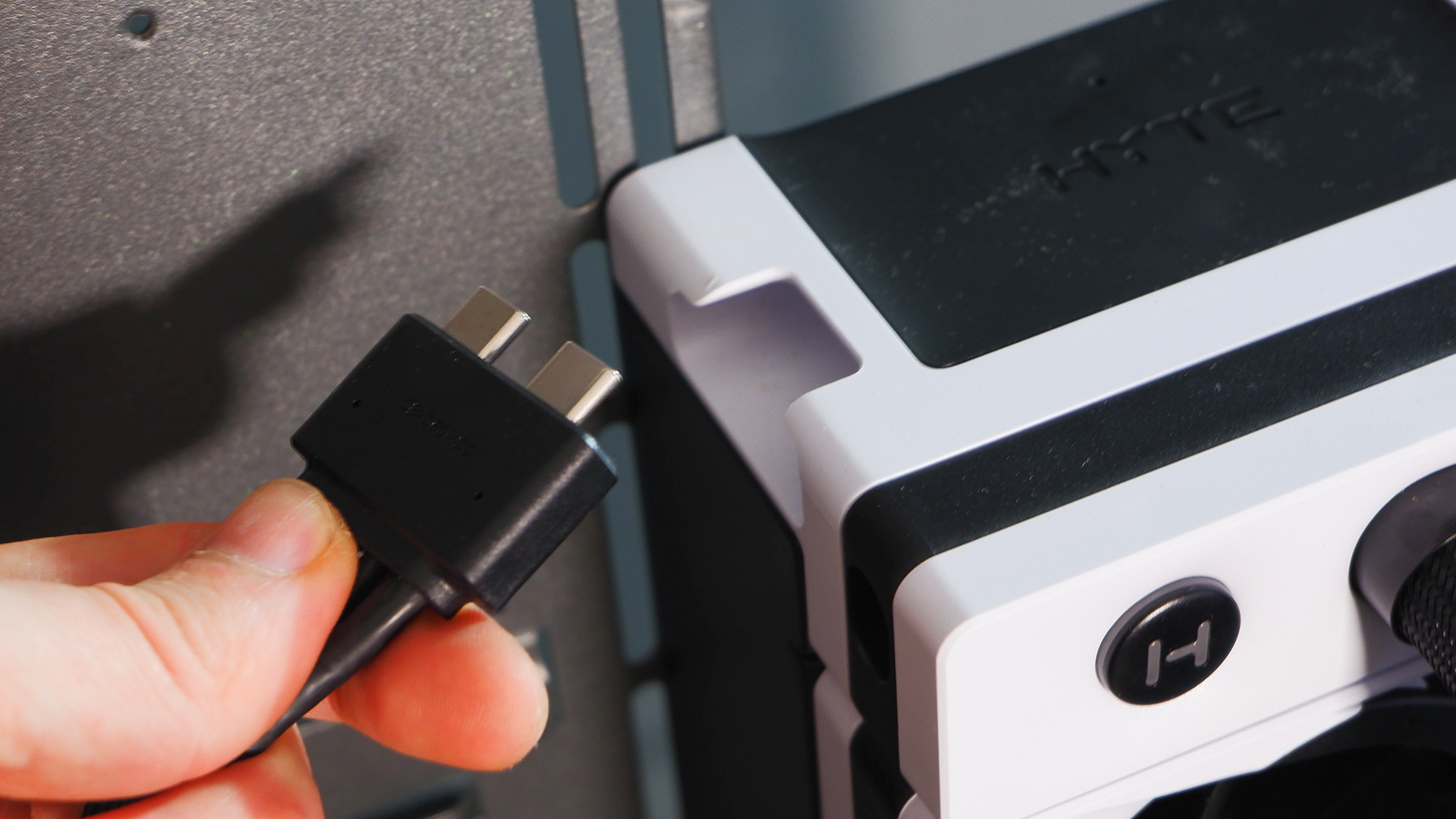
✅ You want always on system monitoring: If you like to keep track of what your PC is up to at all times, the 5-inch screen on the Q60 is a good way to do it. Providing you can actually see it, of course.
✅ You don't have the room for a 360 mm radiator: You can get pretty spectacular cooler performance for gaming out of the Q60, even matching much larger units.
✅ You crave a tidy PC: The way the few cables required connect to the radiator block on the Q60 make for very easily hidden cable runs. It's extremely neat.
❌ You need the best cooling performance for the money: The extra features on the Hyte Q60 add up, and that means it costs a pretty penny where even larger AIOs don't.
❌ You don't want more software on your PC: The Hyte Hexus application is just another piece of software to run in the background. It's pretty much a necessity to make the most of the Q60's screen, unless you're a dab hand with Android commands.
There are other reasons to consider the Q60.
It's extremely neat and tidy, for one. It requires only a handful of cables, collected into a single dual-USB Type-C connector, and plugged seamlessly into the radiator. It's then easy to keep this single cable run out sight, and, unlike most liquid coolers, there's no need to run any cables around the VRM or RAM. The screen is controlled via cables embedded into the mesh-covered tubing, which is thicker than most liquid coolers on the market as a result.
The fans can also be bought separately and daisy-chained together with a dedicated cable-free connector or specially fitted cables. Same goes for the RGB lighting kit, which hooks together via USB-C. The Q60 offers one spare port for both connections, which are called Nexus Link ports, and means it can act as a hub for a heap of other stuff.
It also comes with a six-year warranty, which matches the likes of Corsair and Arctic.
I do end up coming back to the Q60 on looks alone. Though they have to mean a lot to you—not only can be matched by simpler devices but often significantly cheaper ones, too. The Q60 is priced at the tremendous sum of $300/£330. With a massive screen attached to the centre of it, I can see why. Though for that much money, and for being so thicc, I'm a bit disappointed it couldn't match a more traditional 240 mm cooler in demanding tests.
Though I'll be damned if it doesn't look good.







